
Santa Cruz Trek: A Journey Through Peru's Majestic Andes
Embark on the Santa Cruz Trek in Peru: A 50-km adventure through the Cordillera Blanca, featuring stunning glacial lakes, high mountain passes, and rich cultural experiences.
The Santa Cruz Trek in Peru is one of the most breathtaking hikes in the world. Nestled in the heart of the Cordillera Blanca mountain range, this trek offers an unparalleled opportunity to explore some of the most stunning natural landscapes South America has to offer. The trek spans approximately 50 kilometers and takes you through high mountain passes, lush valleys, and crystal-clear glacial lakes. The journey begins in the small village of Cashapampa and ends in Vaqueria, taking about 4 to 5 days to complete. Along the way, you'll encounter diverse ecosystems, from arid highlands to verdant meadows, all framed by towering snow-capped peaks. One of the highlights of the trek is the Punta Union Pass, which sits at an altitude of 4,750 meters and provides panoramic views of the surrounding mountains, including the majestic Huascaran, the highest peak in Peru. The Santa Cruz Trek is not just about the physical journey; it's also a cultural experience. You'll pass through remote Andean villages where you can interact with local Quechua-speaking communities and learn about their way of life. This trek is ideal for nature lovers, adventure seekers, and anyone looking to experience the raw beauty of the Andes.
Local tips in Santa Cruz Trek
- Acclimatize before starting the trek to avoid altitude sickness.
- Hire a local guide for a more enriching experience and to navigate tricky parts of the trail.
- Pack layers; temperatures can range from hot during the day to freezing at night.
- Bring water purification tablets as clean drinking water can be scarce.
- Leave no trace; respect the environment and local communities by carrying out all your trash.
Santa Cruz Trek: A Journey Through Peru's Majestic Andes
The Santa Cruz Trek in Peru is one of the most breathtaking hikes in the world. Nestled in the heart of the Cordillera Blanca mountain range, this trek offers an unparalleled opportunity to explore some of the most stunning natural landscapes South America has to offer. The trek spans approximately 50 kilometers and takes you through high mountain passes, lush valleys, and crystal-clear glacial lakes. The journey begins in the small village of Cashapampa and ends in Vaqueria, taking about 4 to 5 days to complete. Along the way, you'll encounter diverse ecosystems, from arid highlands to verdant meadows, all framed by towering snow-capped peaks. One of the highlights of the trek is the Punta Union Pass, which sits at an altitude of 4,750 meters and provides panoramic views of the surrounding mountains, including the majestic Huascaran, the highest peak in Peru. The Santa Cruz Trek is not just about the physical journey; it's also a cultural experience. You'll pass through remote Andean villages where you can interact with local Quechua-speaking communities and learn about their way of life. This trek is ideal for nature lovers, adventure seekers, and anyone looking to experience the raw beauty of the Andes.
When is the best time to go to Santa Cruz Trek?
Unmissable attractions to see
Iglesia Del Señor De La Soledad
Experience the majestic beauty and spiritual significance of Iglesia Del Señor De La Soledad, a must-see church in the heart of Huaraz, Peru.
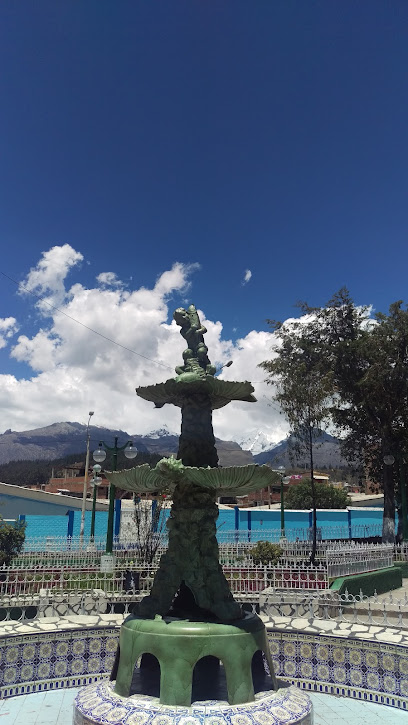
Huascaran
Discover the breathtaking beauty and adventure of Huascarán, Peru's highest peak, a UNESCO World Heritage site and a paradise for nature lovers.
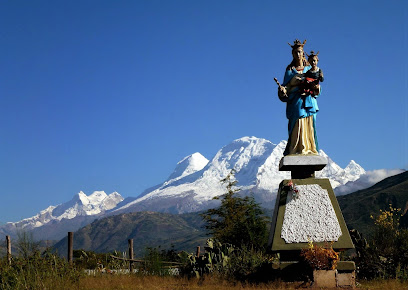
Churup
Explore the breathtaking beauty of Churup, a stunning mountain peak in the Peruvian Andes, perfect for adventure and nature lovers.
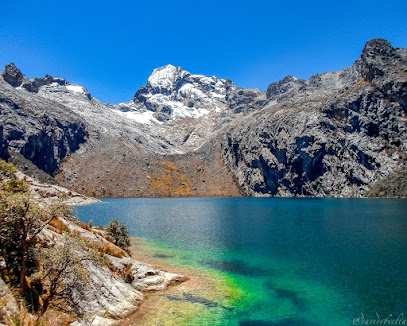
Pukarahu
Explore the breathtaking Pukarahu Peak in Peru, where adventure meets stunning landscapes and rich biodiversity in the heart of the Andes.
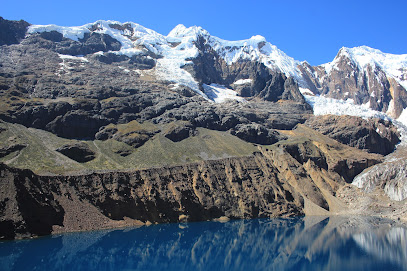
MIRADOR DEL VALLE-SANTA CRUZ
Experience the breathtaking vistas of Mirador del Valle in Santa Cruz, where nature's beauty unfolds in stunning panoramic views and serene landscapes.
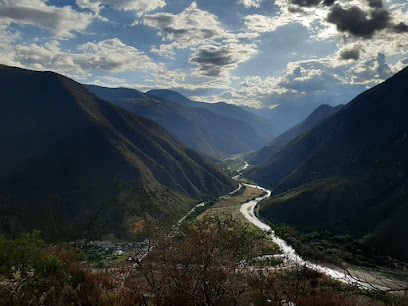
Essential places to dine
Trivio Resto Bar
Discover Trivio Resto Bar in Huaraz - where local flavors meet international cuisine in a vibrant setting.
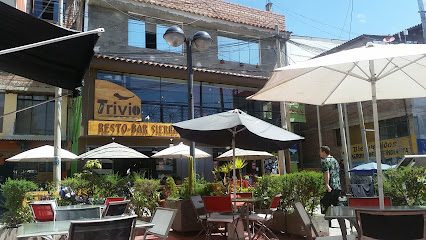
Cafe Andino
Discover the flavors of Peru at Cafe Andino in Huaraz – where every meal is a celebration of local culture and culinary excellence.
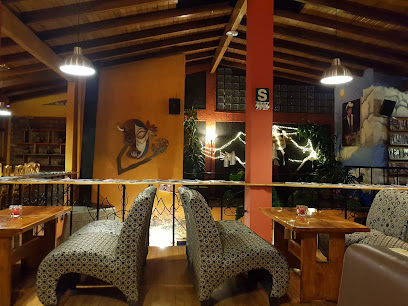
Mi Comedia - Pizzeria
Discover exquisite Italian cuisine at Mi Comedia - Pizzeria in Huaraz: A culinary delight featuring authentic wood-fired pizzas and more.
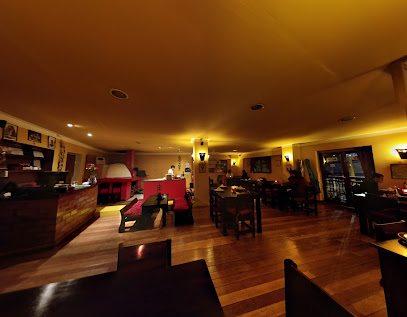
Creperie Patrick
Discover authentic French crepes at Creperie Patrick in Huaraz - where every bite transports you to France amidst breathtaking Andean views.
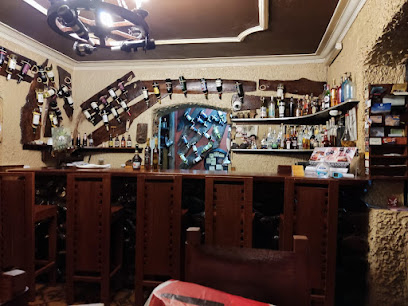
Chilli Heaven
Experience authentic Peruvian cuisine at Chilli Heaven in Huaraz – where every dish tells a flavorful story.
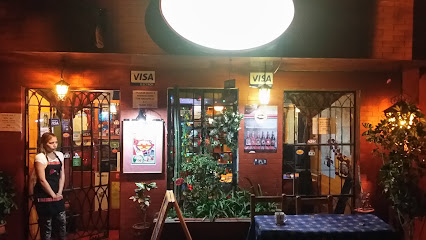
Calima - Restaurant & Café
Experience authentic Peruvian flavors at Calima Restaurant & Café in Huaraz - where tradition meets taste.
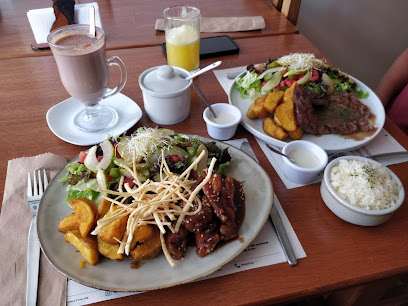
Santa Cruz Trek - 4 days / 3 Nights
Discover breathtaking mountain landscapes on the Santa Cruz Trek - a 4-day adventure in Peru's stunning Andes region.
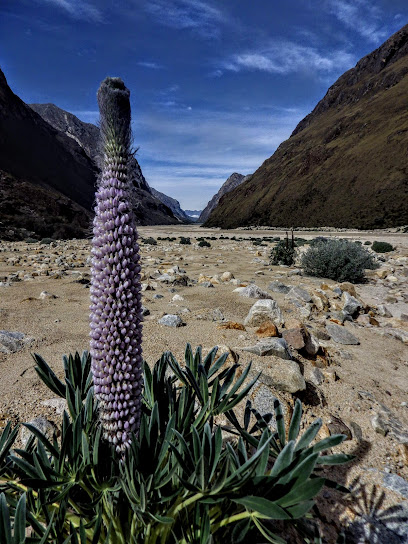
Trek Santa Cruz
Experience breathtaking landscapes and vibrant biodiversity on your hiking adventure at Trek Santa Cruz in Peru.
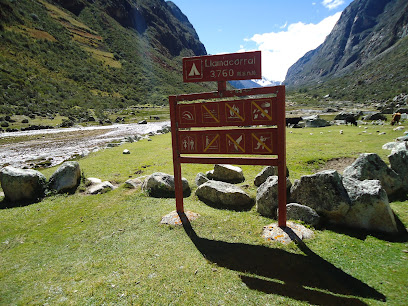
Markets, malls and hidden boutiques
Trek Santa Cruz
Discover the breathtaking landscapes of Trek Santa Cruz, Peru's premier hiking destination, offering stunning views and rich biodiversity.
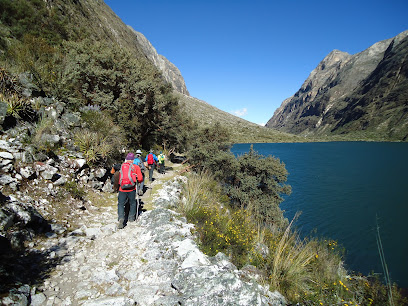
SANTA CRUZ OUTDOOR
Discover the ultimate outdoor clothing store in Huaraz, offering high-quality gear for trekking and climbing adventures in the Andes.

Essential bars & hidden hideouts
EL TUMI HOTEL
Discover El Tumi Hotel in Huaraz: A perfect blend of comfort, local cuisine, and stunning Andean adventures await you.

La chupiteria the shot bar
Discover the vibrant nightlife of Cusco at La Chupiteria, the ultimate shot bar offering a unique selection of drinks in a lively atmosphere.
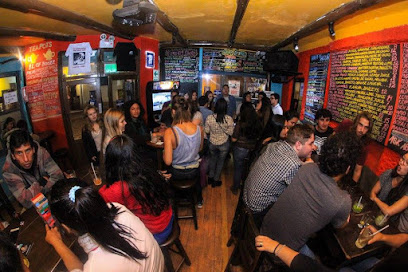
CORDILLERA HOTEL
Experience unmatched comfort and breathtaking views at Cordillera Hotel, your luxurious base for exploring Huaraz's stunning landscapes.

Cafe Andino
Discover the flavors of Peru at Cafe Andino, a charming restaurant and coffee shop in Huaraz offering delightful dishes and a cozy ambiance for every visitor.

Creperie Patrick
Experience the charming flavors of France at Creperie Patrick in Huaraz, where delightful crepes and fine wines await every visitor.
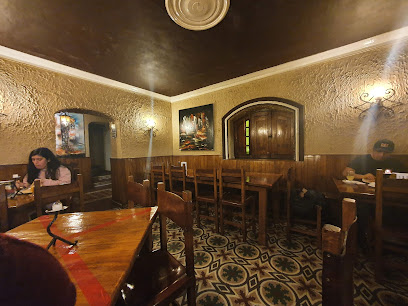
Andino Club Hotel Asociado Casa Andina
Discover the heart of Huaraz at Andino Club Hotel, where comfort meets the breathtaking beauty of the Peruvian Andes.

Alpes Huaraz
Alpes Huaraz: Your Affordable Gateway to the Majestic Andes and Unforgettable Adventures in Huaraz, Peru.

Big Mountain Hostel
Experience comfort and adventure at Big Mountain Hostel, your perfect base for exploring the stunning Andes in Huaraz, Peru.

Calima - Restaurant & Café
Experience authentic Peruvian cuisine at Calima - Restaurant & Café in Huaraz, where every meal is a celebration of local flavors.

Cordillera Blanca Lodge
Discover the breathtaking beauty and serene experience at Cordillera Blanca Lodge, your perfect mountain retreat in the heart of the Andes.
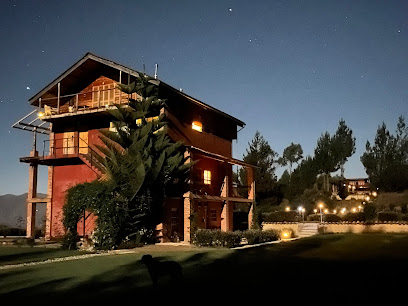
Albergue Churup
Discover the serene comfort of Albergue Churup, your gateway to the stunning Andes in Huaraz, Peru.
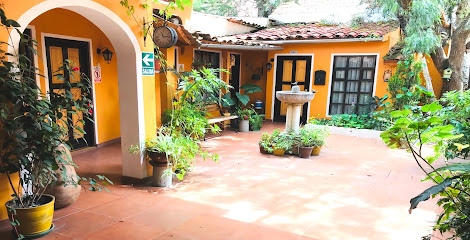
Hotel en Huaraz: Arawi Pastoruri Hotel
Discover the enchanting beauty of Huaraz while enjoying the comfort of Arawi Pastoruri Hotel, your perfect base for adventure in the Andes.

Hotel El Patio de Monterrey
Discover comfort and culture at Hotel El Patio de Monterrey, a charming hotel in Peru that offers an authentic experience for travelers.

Ebony Hotel
Discover comfort and warmth at Ebony Hotel, your ideal base for exploring the stunning landscapes of Huaraz, Peru.

La Casa de Zarela - Restaurante Thai
Discover the vibrant flavors of Thailand at La Casa de Zarela in Huaraz, a must-visit spot for food lovers and adventurers alike.

Local Phrases about Santa Cruz Trek
-
- Hello¡Hola!
[O-lah] - Goodbye¡Adiós!
[Ah-dee-ohs] - YesSí
[See] - NoNo
[Noh] - Please/You're welcomePor favor/De nada
[Pohr fah-vohr/Deh nah-dah] - Thank you¡Gracias!
[Grah-see-ahs] - Excuse me/SorryDisculpe/Lo siento
[Dees-kool-peh/Loh see-en-toh] - How are you?¿Cómo estás?
[Koh-moh ehs-tahs] - Fine. And you?Bien. ¿Y tú?
[Byen. Ee too] - Do you speak English?¿Hablas inglés?
[Ah-blahs een-glays] - I don't understandNo entiendo
[Noh ehn-tyen-doh]
- Hello¡Hola!
-
- I'd like to see the menu, pleaseMe gustaría ver el menú, por favor
[Meh goos-tah-ree-ah behr ehl meh-noo, pohr fah-vohr] - I don't eat meatNo como carne
[Noh koh-moh kahr-neh] - Cheers!¡Salud!
[Sah-lood] - I would like to pay, pleaseMe gustaría pagar, por favor
[Meh goos-tah-ree-ah pah-gahr, pohr fah-vohr]
- I'd like to see the menu, pleaseMe gustaría ver el menú, por favor
-
- Help!¡Ayuda!
[Ah-yoo-dah] - Go away!¡Vete!
[Veh-teh] - Call the Police!¡Llama a la Policía!
[Yah-mah ah lah Poh-lee-see-ah] - Call a doctor!¡Llama a un doctor!
[Yah-mah ah oon dohk-tohr] - I'm lostEstoy perdido/a
[Ehs-toy pehr-dee-doh/dah] - I'm illEstoy enfermo/a
[Ehs-toy ehn-fehr-moh/dah]
- Help!¡Ayuda!
-
- I'd like to buy...Me gustaría comprar...
[Meh goos-tah-ree-ah kohm-prahr] - I'm just lookingSolo estoy mirando
[Soh-loh ehs-toy mee-rahn-doh] - How much is it?¿Cuánto cuesta?
[Kwan-toh kwehs-tah] - That's too expensiveEso es demasiado caro
[Eh-soh ehs deh-mah-syah-doh kah-roh] - Can you lower the price?¿Puedes rebajar el precio?
[Pweh-dehs reh-bah-hahr ehl preh-syoh]
- I'd like to buy...Me gustaría comprar...
-
- What time is it?¿Qué hora es?
[Keh oh-rah ehs] - It's one o'clockEs la una en punto
[Ehs lah oo-nah ehn poon-toh] - Half past (10)Las diez y media
[Las dyehs ee meh-dee-ah] - MorningMañana
[Mah-nyah-nah] - AfternoonTarde
[Tahr-deh] - EveningNoche
[Noh-cheh] - YesterdayAyer
[Ah-yehr] - TodayHoy
[Oy] - TomorrowMañana
[Mah-nyah-nah] - 1Uno
[Oo-noh] - 2Dos
[Dohs] - 3Tres
[Trehs] - 4Cuatro
[Kwah-troh] - 5Cinco
[Seeng-koh] - 6Seis
[Sehs] - 7Siete
[Syeh-teh] - 8Ocho
[Oh-choh] - 9Nueve
[Nweh-veh] - 10Diez
[Dyehs]
- What time is it?¿Qué hora es?
-
- Where's a/the...?¿Dónde está el/la...?
[Dohn-deh ehs-tah ehl/lah] - What's the address?¿Cuál es la dirección?
[Kwahl ehs lah dee-rehk-syohn] - Can you show me (on the map)?¿Puedes enseñarme (en el mapa)?
[Pweh-dehs ehn-seh-nyahr-meh (ehn ehl mah-pah)] - When's the next (bus)?¿Cuándo es el próximo (autobús)?
[Kwan-doh ehs ehl proh-ksee-moh (ow-toh-booce)] - A ticket (to ....)Un boleto (a ....)
[Oon boh-leh-toh (ah)]
- Where's a/the...?¿Dónde está el/la...?
History of Santa Cruz Trek
-
The Santa Cruz Trek area has been inhabited for thousands of years. The ancient Peruvian civilizations, such as the Chavín and the Recuay, left their mark on this region. The Chavín culture, known for their intricate stone carvings and advanced agricultural practices, flourished around 900 BCE to 200 BCE. The Recuay culture, which followed, is noted for their ceramics and stone sculptures, dating from 200 CE to 700 CE. Evidence of these early civilizations can still be found in the form of archaeological sites and artifacts scattered across the region.
-
During the height of the Inca Empire in the 15th century, the Santa Cruz Trek area was integrated into the vast network of Inca roads known as the Qhapaq Ñan. These roads facilitated communication, trade, and military movements throughout the empire. The Incas built impressive terraced fields, irrigation systems, and storage structures (qollqas) in the region, some of which can still be seen today. The legacy of the Incas remains an integral part of the cultural and historical fabric of the Santa Cruz Trek.
-
The arrival of the Spanish conquistadors in the 16th century brought significant changes to the Santa Cruz Trek region. The Spanish imposed their rule, religion, and culture on the indigenous populations. The colonial period saw the establishment of new towns and the construction of churches and other colonial architecture. The impact of Spanish colonization can be seen in the blend of indigenous and European influences that characterize the area's cultural heritage.
-
In 1975, Huascarán National Park was established to protect the unique ecosystems and biodiversity of the Cordillera Blanca, which includes the Santa Cruz Trek. The park was designated a UNESCO World Heritage Site in 1985, recognizing its global significance. Conservation efforts have focused on preserving the natural beauty of the area, protecting endangered species, and promoting sustainable tourism practices. The establishment of the park has also helped to preserve the traditional lifestyles and cultures of the local communities.
-
The Santa Cruz Trek has become one of the most popular trekking routes in Peru, attracting adventurers from around the world. The development of trekking and adventure tourism in the late 20th and early 21st centuries has brought economic opportunities to the region. Local guides, porters, and tour operators play a crucial role in facilitating treks and ensuring the safety and enjoyment of visitors. The growth of tourism has also prompted efforts to balance economic development with environmental conservation and cultural preservation.
Santa Cruz Trek Essentials
-
The Santa Cruz Trek is located in the Cordillera Blanca range of the Andes in Peru. The nearest major city is Huaraz, which is about 400 kilometers north of Lima, the capital of Peru. From Lima, you can take a bus to Huaraz, with several companies offering daily services. The bus journey takes approximately 8 hours and offers spectacular scenery along the way. Alternatively, you can fly to Comandante FAP Germán Arias Graziani Airport in Anta, which is about 20 kilometers from Huaraz, and then take a taxi or a bus to Huaraz.
-
In Huaraz, you can arrange transportation to the starting point of the Santa Cruz Trek, which is usually in the village of Cashapampa or Vaqueria. Local buses and taxis are available, but many trekkers opt to book a guided tour that includes transportation. Once on the trek, transportation is limited to foot traffic or hiring mules and porters to carry equipment.
-
The official currency of Peru is the Peruvian Sol (PEN). In Huaraz, credit cards are widely accepted in hotels, restaurants, and larger shops, but it is advisable to carry cash for smaller establishments and rural areas. ATMs are available in Huaraz, but it is recommended to withdraw sufficient cash before starting the trek, as there are no banking facilities along the route.
-
The Santa Cruz Trek is generally considered safe for tourists, but standard precautions should be taken. Avoid trekking alone and always inform someone of your travel plans. Be aware of altitude sickness, and take time to acclimatize in Huaraz before starting the trek. Crime rates targeting tourists are low, but it is best to keep an eye on your belongings and avoid displaying valuable items. Stick to well-trodden paths and avoid trekking after dark.
-
In case of emergency, the nearest medical facilities are in Huaraz. It is crucial to have travel insurance that covers high-altitude trekking and medical evacuation. Carry a basic first aid kit and know the symptoms of altitude sickness. If you need assistance, local guides and park rangers are usually available along the route. For serious emergencies, contact the local authorities or the nearest embassy.
-
Fashion: Do wear appropriate trekking gear, including sturdy boots, warm clothing, and a hat for sun protection. Avoid wearing sandals or open-toed shoes. Religion: Do respect local customs and traditions, especially in villages and religious sites. Public Transport: Do be respectful and offer your seat to elderly and pregnant passengers. Don't eat or drink on public transport. Greetings: Do greet people with a friendly 'Hola' or 'Buenos días.' A handshake is also common. Eating & Drinking: Do try local dishes such as ceviche and lomo saltado. Don't refuse food offered by locals, as it is considered impolite.
-
To experience the Santa Cruz Trek like a local, consider hiring a local guide who can share insights about the area's history and culture. Visit the local markets in Huaraz to stock up on fresh produce and traditional goods before starting the trek. Engage with local communities along the route, as they often have fascinating stories to share. Don't miss the opportunity to take in the stunning views of Alpamayo and Huascarán, two of the most iconic peaks in the Cordillera Blanca.
-
The best time to visit the Santa Cruz Trek is during the dry season, from May to September, when the weather is most stable and the skies are clear. Temperatures can vary significantly, with warm days and cold nights, so pack accordingly. The rainy season, from October to April, brings unpredictable weather and can make the trek more challenging.
-
Accommodation along the Santa Cruz Trek is typically in the form of camping. Trekkers need to carry their own tents and camping equipment or arrange for a guided tour that provides these services. In Huaraz, there are a variety of lodging options ranging from budget hostels to more upscale hotels. It is advisable to book accommodation in advance, especially during the peak trekking season.
-
To trek the Santa Cruz route, you will need to obtain a park entrance permit for Huascarán National Park, which can be purchased in Huaraz or at the park entrance. Make sure to carry your permit with you at all times. Follow Leave No Trace principles, and be mindful of the local environment and wildlife. Respect local regulations and guidelines to preserve the natural beauty of the area.
Nearby Cities to Santa Cruz Trek
-
Things To Do in Trujillo
-
Things To Do in Lima
-
Things To Do in Huancayo
-
Things To Do in Chiclayo
-
Things To Do in Ayacucho
-
Things To Do in Ica
-
Things To Do in Piura
-
Things To Do in Loja
-
Things To Do in Machu Picchu
-
Things To Do in Cusco
-
Things To Do in Cuenca
-
Things To Do in Iquitos
-
Things To Do in Macas
-
Things To Do in Guayaquil
-
Things To Do in Salinas








